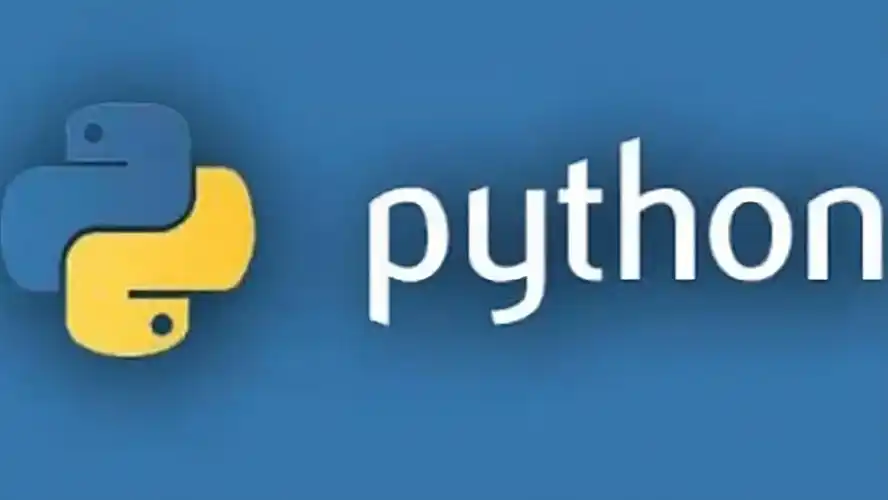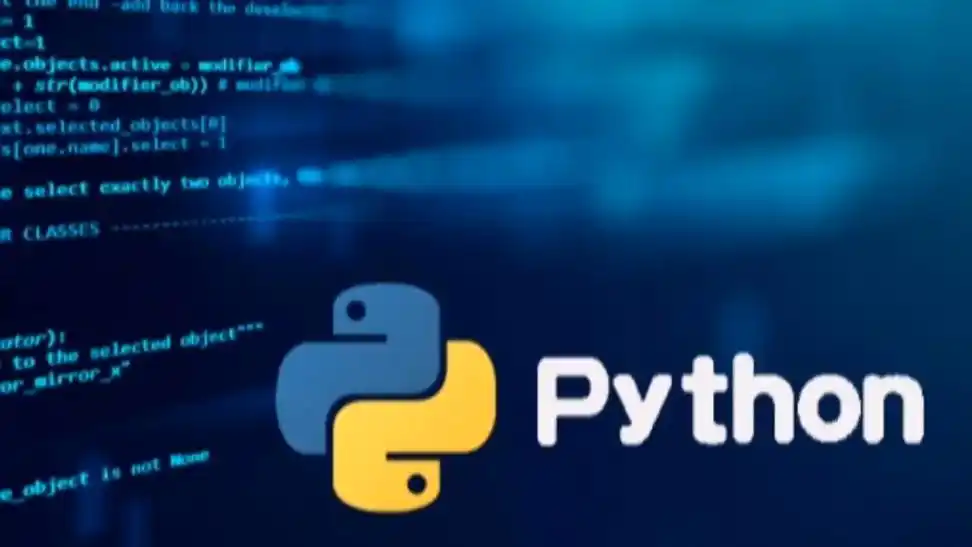全方位Python学习方法论:从入门到精通的系统指南

文章目录
- 引言:Python学习的现代挑战与机遇
- 一、认知科学视角下的Python学习基础
- 1.1 构建有效的心理表征
- 1.2 刻意练习与知识组块化
- 1.3 认知负荷理论与学习资源选择
- 二、Python基础能力的系统构建
- 2.1 核心语法要素的掌握策略
- 2.2 数据结构的选择与应用
- 2.3 函数式编程范式的融合
- 三、项目驱动的实践学习法
- 3.1 项目选择与难度梯度
- 3.2 开源贡献的学习价值
- 3.3 测试驱动开发(TDD)实践
- 四、算法与数据结构的内化训练
- 4.1 算法思维的培养路径
- 4.2 Python特色的高效算法实现
- 五、工程化能力的提升策略
- 5.1 代码质量保障体系
- 5.2 性能分析与优化
- 六、领域专精与持续学习
- 6.1 选择专业方向
- 6.2 构建个人知识管理系统
- 七、学习资源与社区参与
- 7.1 优质学习资源推荐
- 7.2 社区参与策略
- 结论:构建个性化的Python学习路径

引言:Python学习的现代挑战与机遇
Python作为当今最流行的编程语言之一,以其简洁的语法、丰富的生态系统和广泛的应用领域吸引了大量学习者。然而,面对海量的学习资源和快速变化的技术栈,许多初学者甚至有一定经验的开发者都会感到迷茫:究竟什么样的Python学习方法才是最有效的?
本文将从认知科学、教育心理学和软件工程实践的角度,系统分析Python学习的最佳路径,提供一套完整的、可操作的方法论体系。我们将探讨从零基础到高级开发者的全过程,涵盖基础语法掌握、项目实践、算法思维培养、工程能力提升等关键维度,并通过大量代码示例展示如何将理论转化为实践。
一、认知科学视角下的Python学习基础
1.1 构建有效的心理表征
心理表征是认知科学中的核心概念,指信息在头脑中的呈现方式。对于编程学习而言,构建良好的心理表征意味着能够:
- 准确理解编程概念的内在结构
- 在不同抽象层次间灵活转换
- 将问题分解为可执行的代码逻辑
代码示例:理解变量赋值的心理表征
# 初级理解:变量是值的容器
x = 5
y = x# 中级理解:变量是对象的引用
a = [1, 2, 3]
b = a
b.append(4)
print(a) # 输出[1, 2, 3, 4],理解引用语义# 高级理解:可变与不可变对象的区别
def modify(num, lst):num += 1lst.append(5)n = 10
m = [1, 2]
modify(n, m)
print(n) # 输出10,不变
print(m) # 输出[1, 2, 5],可变
1.2 刻意练习与知识组块化
根据Anders Ericsson的研究,专家级表现需要通过刻意练习获得。在Python学习中,这意味着:
- 明确具体的练习目标(如"掌握列表推导式")
- 获得即时反馈(通过测试、代码审查等)
- 突破舒适区但不过度困难
组块化练习示例:从基础到高级的函数概念
# 阶段1:基础函数定义
def greet(name):return f"Hello, {name}!"# 阶段2:默认参数与类型提示
def power(base: float, exponent: float = 2) -> float:return base ** exponent# 阶段3:高阶函数
def apply_operation(func, x, y):return func(x, y)result = apply_operation(lambda a, b: a * b, 3, 4)
print(result) # 输出12# 阶段4:装饰器
def log_time(func):from time import timedef wrapper(*args, **kwargs):start = time()result = func(*args, **kwargs)print(f"{func.__name__} executed in {time()-start:.4f}s")return resultreturn wrapper@log_time
def heavy_computation(n):return sum(i*i for i in range(n))
1.3 认知负荷理论与学习资源选择
John Sweller的认知负荷理论指出,学习效果受内在负荷(内容难度)、外在负荷(呈现方式)和相关负荷(知识建构)影响。优化Python学习需要:
- 控制信息输入速率(避免同时学习过多新概念)
- 使用工作示例(worked examples)
- 逐步增加复杂性
学习路径设计示例:面向对象编程的渐进式学习
# 阶段1:基础类定义
class Dog:def __init__(self, name):self.name = namedef bark(self):print(f"{self.name} says woof!")# 阶段2:继承与方法覆盖
class Bulldog(Dog):def bark(self):print(f"{self.name} says grrr!")# 阶段3:特殊方法与运算符重载
class Vector:def __init__(self, x, y):self.x = xself.y = ydef __add__(self, other):return Vector(self.x + other.x, self.y + other.y)def __repr__(self):return f"Vector({self.x}, {self.y})"# 阶段4:抽象基类与接口
from abc import ABC, abstractmethodclass Shape(ABC):@abstractmethoddef area(self):passclass Circle(Shape):def __init__(self, radius):self.radius = radiusdef area(self):return 3.14 * self.radius ** 2
二、Python基础能力的系统构建
2.1 核心语法要素的掌握策略
Python虽然以语法简洁著称,但深入理解其核心机制需要系统的方法:
变量与内存管理
# 理解Python的引用计数机制
import sysa = [1, 2, 3]
print(sys.getrefcount(a)) # 查看引用计数# 循环引用问题示例
class Node:def __init__(self, value):self.value = valueself.next = Nonex = Node(1)
y = Node(2)
x.next = y
y.next = x # 创建循环引用# 使用weakref解决循环引用
import weakref
y.next = weakref.ref(x)
控制结构的深度理解
# 循环结构优化
# 传统方式
result = []
for i in range(10):if i % 2 == 0:result.append(i**2)# Pythonic方式
result = [i**2 for i in range(10) if i % 2 == 0]# 异常处理的正确实践
def divide_safely(a, b):try:return a / bexcept ZeroDivisionError as e:print(f"Error: {e}")return float('inf') if a >= 0 else float('-inf')except TypeError:print("Both arguments must be numbers")raise # 重新抛出异常
2.2 数据结构的选择与应用
Python内置数据结构的高效使用是编写优质代码的关键:
列表与生成器的对比
# 内存效率对比
import memory_profiler@memory_profiler.profile
def list_version():return [x*x for x in range(1000000)]@memory_profiler.profile
def gen_version():return (x*x for x in range(1000000))# 字典的高级用法
from collections import defaultdict, Counter# 默认字典
word_counts = defaultdict(int)
for word in ['apple', 'banana', 'apple']:word_counts[word] += 1# 计数器
words = ['apple', 'banana', 'apple', 'orange']
word_counts = Counter(words)
print(word_counts.most_common(1)) # [('apple', 2)]# 使用字典实现缓存
def memoize(func):cache = {}def wrapper(*args):if args not in cache:cache[args] = func(*args)return cache[args]return wrapper@memoize
def fibonacci(n):if n < 2:return nreturn fibonacci(n-1) + fibonacci(n-2)
2.3 函数式编程范式的融合
Python对函数式编程的支持常被低估,合理运用可大幅提升代码质量:
# 高阶函数应用
from functools import reducenumbers = [1, 2, 3, 4, 5]# Map
squares = list(map(lambda x: x**2, numbers))# Filter
evens = list(filter(lambda x: x % 2 == 0, numbers))# Reduce
product = reduce(lambda x, y: x * y, numbers)# 偏函数应用
from functools import partialdef power(base, exponent):return base ** exponentsquare = partial(power, exponent=2)
cube = partial(power, exponent=3)# 闭包的高级应用
def make_adder(n):def adder(x):return x + nreturn adderadd5 = make_adder(5)
print(add5(10)) # 15
三、项目驱动的实践学习法
3.1 项目选择与难度梯度
有效的Python学习应该基于项目实践,项目选择应遵循"i+1"原则(略高于当前水平):
学习项目梯度示例
- 初级项目:文本处理工具(词频统计、文件格式转换)
- 中级项目:Web爬虫/数据分析可视化
- 高级项目:微型Web框架/数据库ORM实现
示例:中级项目 - 股票数据分析工具
import pandas as pd
import matplotlib.pyplot as plt
from datetime import datetimeclass StockAnalyzer:def __init__(self, data_path):self.data = pd.read_csv(data_path, parse_dates=['Date'])self.data.set_index('Date', inplace=True)def moving_average(self, window=30):return self.data['Close'].rolling(window=window).mean()def plot_comparison(self, start_date, end_date):mask = (self.data.index >= pd.to_datetime(start_date)) & \(self.data.index <= pd.to_datetime(end_date))subset = self.data.loc[mask]plt.figure(figsize=(12, 6))plt.plot(subset.index, subset['Close'], label='Close Price')plt.plot(subset.index, self.moving_average()[mask], label='30-day MA')plt.title('Stock Price Analysis')plt.legend()plt.grid()plt.show()def daily_returns(self):return self.data['Close'].pct_change()# 使用示例
analyzer = StockAnalyzer('stock_data.csv')
analyzer.plot_comparison('2020-01-01', '2020-12-31')
returns = analyzer.daily_returns()
print(f"Average daily return: {returns.mean():.2%}")
3.2 开源贡献的学习价值
参与开源项目是提升Python技能的绝佳途径,具体步骤包括:
- 选择适合自己水平的项目(Good First Issue标签)
- 阅读项目代码规范和贡献指南
- 从文档改进或简单bug修复开始
示例:为开源项目贡献的准备工作
# 克隆项目仓库
# git clone https://github.com/example/project.git# 创建虚拟环境
# python -m venv venv
# source venv/bin/activate # Linux/Mac
# venv\Scripts\activate # Windows# 安装开发依赖
# pip install -r requirements-dev.txt# 运行测试确保环境正确
# pytest tests/# 创建特性分支
# git checkout -b fix/issue-123
3.3 测试驱动开发(TDD)实践
TDD不仅能提高代码质量,还能促进更好的设计思考:
# 测试驱动开发示例:实现一个栈
import pytest# 先写测试
def test_stack_operations():s = Stack()assert s.is_empty()s.push(5)assert not s.is_empty()assert s.peek() == 5s.push(3)assert s.pop() == 3assert s.pop() == 5assert s.is_empty()with pytest.raises(StackEmptyError):s.pop()# 然后实现
class StackEmptyError(Exception):passclass Stack:def __init__(self):self._items = []def push(self, item):self._items.append(item)def pop(self):if self.is_empty():raise StackEmptyError("Cannot pop from empty stack")return self._items.pop()def peek(self):if self.is_empty():raise StackEmptyError("Cannot peek empty stack")return self._items[-1]def is_empty(self):return len(self._items) == 0
四、算法与数据结构的内化训练
4.1 算法思维的培养路径
算法能力不是一蹴而就的,需要系统训练:
- 基础阶段:掌握大O表示法,理解时间/空间复杂度
- 核心算法:排序、搜索、递归、动态规划等
- 应用阶段:LeetCode等平台针对性练习
动态规划示例:背包问题
def knapsack(weights, values, capacity):"""解决0-1背包问题:param weights: 物品重量列表:param values: 物品价值列表:param capacity: 背包容量:return: 最大价值"""n = len(weights)dp = [[0] * (capacity + 1) for _ in range(n + 1)]for i in range(1, n + 1):for w in range(1, capacity + 1):if weights[i-1] <= w:dp[i][w] = max(values[i-1] + dp[i-1][w-weights[i-1]], dp[i-1][w])else:dp[i][w] = dp[i-1][w]# 回溯找出选择的物品selected = []w = capacityfor i in range(n, 0, -1):if dp[i][w] != dp[i-1][w]:selected.append(i-1)w -= weights[i-1]return dp[n][capacity], selected[::-1]# 使用示例
weights = [2, 3, 4, 5]
values = [3, 4, 5, 6]
capacity = 5
max_value, items = knapsack(weights, values, capacity)
print(f"Max value: {max_value}, Selected items: {items}")
4.2 Python特色的高效算法实现
利用Python特性可以写出更简洁高效的算法实现:
使用生成器实现回溯算法
def permutations(items):"""生成所有排列的生成器"""if len(items) == 1:yield itemselse:for i in range(len(items)):for perm in permutations(items[:i] + items[i+1:]):yield [items[i]] + perm# 使用示例
for p in permutations([1, 2, 3]):print(p)# 输出:
# [1, 2, 3]
# [1, 3, 2]
# [2, 1, 3]
# [2, 3, 1]
# [3, 1, 2]
# [3, 2, 1]
使用装饰器缓存优化递归
from functools import lru_cache@lru_cache(maxsize=None)
def fib(n):if n < 2:return nreturn fib(n-1) + fib(n-2)# 对比普通递归的巨大性能差异
print([fib(n) for n in range(100)]) # 瞬间完成
五、工程化能力的提升策略
5.1 代码质量保障体系
专业Python开发者需要建立完整的代码质量意识:
类型注解的深入应用
from typing import List, Tuple, Dict, Optional, Callable, TypeVar, GenericT = TypeVar('T')class Stack(Generic[T]):def __init__(self) -> None:self._items: List[T] = []def push(self, item: T) -> None:self._items.append(item)def pop(self) -> T:return self._items.pop()def is_empty(self) -> bool:return not self._itemsdef process_data(data: List[Tuple[str, int]],callback: Optional[Callable[[str, int], float]] = None
) -> Dict[str, float]:result = {}for key, value in data:if callback:result[key] = callback(key, value)else:result[key] = value * 1.0return result# 使用mypy进行静态类型检查
# pip install mypy
# mypy your_script.py
自动化测试框架
# 使用pytest的高级特性
import pytest@pytest.fixture
def sample_stack():s = Stack[int]()s.push(1)s.push(2)return sdef test_stack_push(sample_stack):sample_stack.push(3)assert sample_stack.pop() == 3def test_stack_pop(sample_stack):assert sample_stack.pop() == 2assert sample_stack.pop() == 1@pytest.mark.parametrize("input,expected", [([], True),([1], False),
])
def test_stack_empty(input, expected):s = Stack[int]()for item in input:s.push(item)assert s.is_empty() == expected
5.2 性能分析与优化
Python性能优化需要基于数据而非猜测:
cProfile使用示例
import cProfile
import redef slow_function():total = 0for i in range(10000):total += sum(int(d) for d in re.findall(r'\d', str(i)))return total# 运行性能分析
profiler = cProfile.Profile()
profiler.enable()
slow_function()
profiler.disable()
profiler.print_stats(sort='cumtime')# 优化后的版本
def fast_function():return sum(int(d) for i in range(10000) for d in str(i) if d.isdigit())profiler = cProfile.Profile()
profiler.enable()
fast_function()
profiler.disable()
profiler.print_stats(sort='cumtime')
使用numba加速数值计算
from numba import jit
import numpy as np# 普通Python函数
def monte_carlo_pi(n_samples):count = 0for _ in range(n_samples):x, y = np.random.random(), np.random.random()if x**2 + y**2 <= 1:count += 1return 4 * count / n_samples# 使用numba加速
@jit(nopython=True)
def monte_carlo_pi_numba(n_samples):count = 0for _ in range(n_samples):x, y = np.random.random(), np.random.random()if x**2 + y**2 <= 1:count += 1return 4 * count / n_samples# 性能对比
%timeit monte_carlo_pi(100000) # 约100ms
%timeit monte_carlo_pi_numba(100000) # 约1ms
六、领域专精与持续学习
6.1 选择专业方向
Python在不同领域有深度应用,建议选择1-2个方向深入:
- Web开发:Django/Flask框架、REST API设计
- 数据科学:Pandas/NumPy/Scikit-learn
- 自动化运维:Ansible/Fabric
- 网络爬虫:Scrapy/BeautifulSoup
- 量化金融:Zipline/Pyfolio
示例:使用Django构建REST API
# models.py
from django.db import modelsclass Product(models.Model):name = models.CharField(max_length=100)price = models.DecimalField(max_digits=10, decimal_places=2)description = models.TextField(blank=True)created_at = models.DateTimeField(auto_now_add=True)# serializers.py
from rest_framework import serializers
from .models import Productclass ProductSerializer(serializers.ModelSerializer):class Meta:model = Productfields = '__all__'# views.py
from rest_framework import generics
from .models import Product
from .serializers import ProductSerializerclass ProductListCreateView(generics.ListCreateAPIView):queryset = Product.objects.all()serializer_class = ProductSerializerclass ProductRetrieveUpdateDestroyView(generics.RetrieveUpdateDestroyAPIView):queryset = Product.objects.all()serializer_class = ProductSerializer
6.2 构建个人知识管理系统
有效的学习需要知识管理:
- 使用Jupyter Notebook记录代码实验
- 建立个人Wiki或笔记系统
- 定期整理学习心得和技术博客
Jupyter Notebook示例:探索性数据分析
import pandas as pd
import seaborn as sns
import matplotlib.pyplot as plt# 加载数据
df = pd.read_csv('housing.csv')# 数据概览
display(df.head())
display(df.describe())# 可视化分布
plt.figure(figsize=(12, 6))
sns.histplot(df['price'], kde=True)
plt.title('Housing Price Distribution')
plt.show()# 特征相关性
corr = df.corr()
sns.heatmap(corr, annot=True, cmap='coolwarm')
plt.title('Feature Correlation Matrix')
plt.show()
七、学习资源与社区参与
7.1 优质学习资源推荐
免费资源:
- Python官方文档(https://docs.python.org/3/)
- Real Python教程(https://realpython.com)
- Python Weekly Newsletter
付费资源:
- 《流畅的Python》(Luciano Ramalho著)
- 《Effective Python》(Brett Slatkin著)
- Pluralsight/PyData会议视频
7.2 社区参与策略
- 参加本地Python用户组(Meetup)
- 在Stack Overflow回答问题
- 参与PyCon等会议(线上/线下)
- 关注Python核心开发者的博客和演讲
结论:构建个性化的Python学习路径
最佳的Python学习方法应该是:
- 基于认知科学原理:合理规划学习节奏,注重刻意练习
- 项目驱动:通过真实问题激发学习动力
- 全面覆盖:从语法基础到工程实践
- 持续演进:跟随语言发展,不断更新知识
记住,学习编程不是短跑而是马拉松。建议制定6-12个月的学习计划,每周保持10-15小时的编码时间,定期回顾和调整学习策略。Python作为一门既适合入门又足够强大的语言,只要采用正确的方法并坚持实践,任何人都能掌握其精髓并应用于实际工作中。

